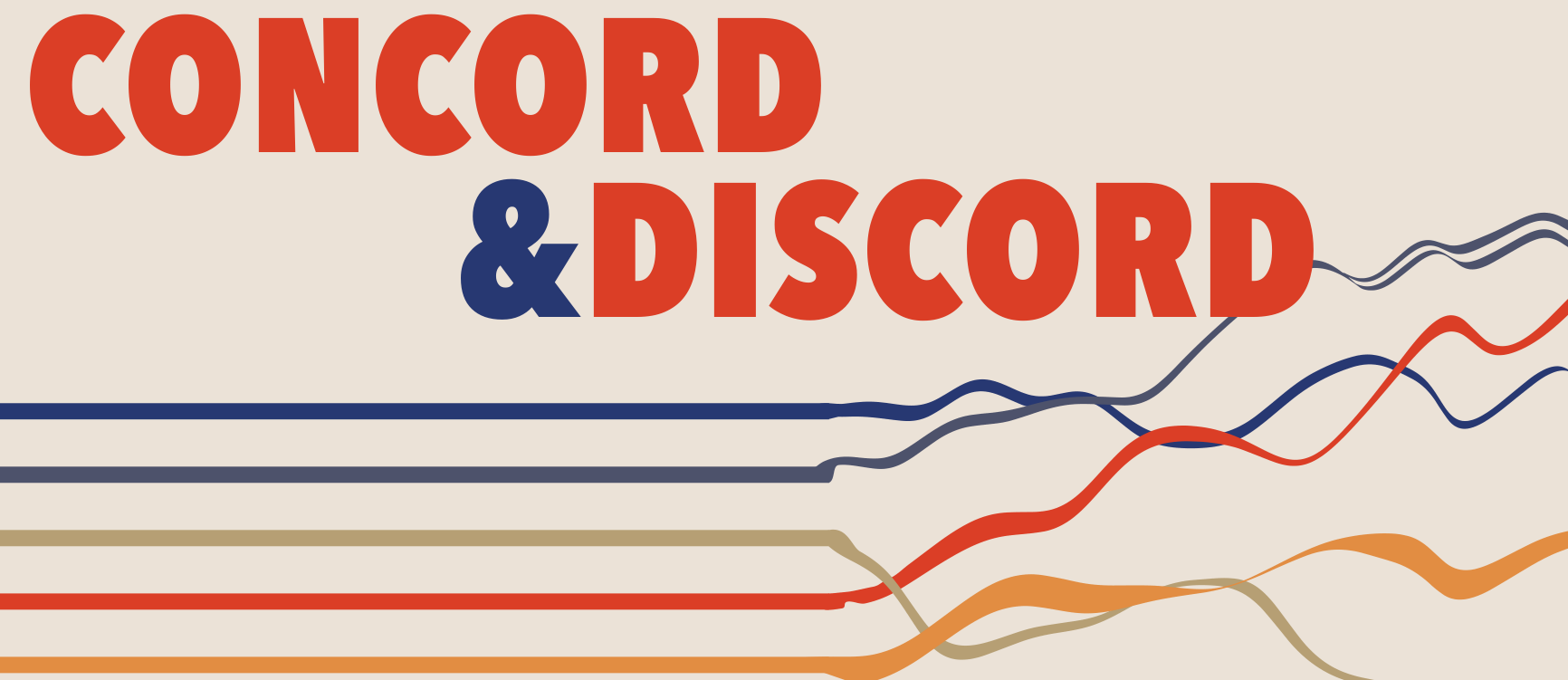
Saturday, February 4, 2023 • 7:30 p.m.
First Free Methodist Church (3200 3rd Ave W)
Harmonia Orchestra & Chorus
William White, conductor
Alex Fang, harpsichord
Mia HyeYeon Kim, harpsichord
Allison Pohl, soprano
Danielle Reutter-Harrah, soprano
José Luis Muñoz, countertenor
Brendan Tuohy, tenor
Darrell J. Jordan, baritone
Program
Sheila Bristow (*1969)
When Music Sounds [world premiere]
Robert Kechley (*1952)
Hard Times: Antiphonal Conversations [world premiere]
— intermission —
Johann Sebastian Bach (1685–1750)
Magnificat in D major, BWV 243
About the Concert
“When music sounds, gone is the earth I know, and all her lovely things even lovelier grow.” That line from the poet Walter de la Mare forms the core notion of Sheila Bristow’s new work, which celebrates the many gifts music bestows upon us. Another of our lockdown-era commissions, this piece was written in the hope of a return to the very art form that brings us all together.
Bob Kechley’s Hard Times, also a pandemic project, explores some of the darker sides of living in a time of turmoil: disagreement, conflict, and acrimony. But in the end, this work — a “concerto” scored for a unique lineup of two harpsichords and three chamber ensembles — seeks reconciliation and enlightenment.
Bach’s Magnificat is a perennial favorite, one of the major delights of the Baroque repertoire. The shortest of Bach’s major choral works, the Magnificat displays just how much variety can fit into a small package.
- full concert progam (PDF)
About the Soloists
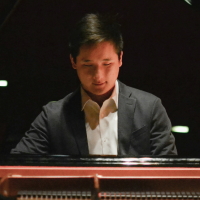
Keyboardist Alex Fang is currently pursuing a DMA at the University of Washington, where he serves as teaching assistant for the Modern Music Ensemble. He holds a master’s degree from the San Francisco Conservatory of Music and a bachelor’s degree from Northwestern University. Throughout his studies, Mr. Fang has immersed himself in solo performance as well as collaborative experiences through teaching, chamber music and collaborative piano. He recently received first place in the SFCM’s Piano Concerto Competition (2022) in addition to alternate-winner prizes in the MTNA Young Artist Performance Piano Competitions in Washington and Illinois, and participated in a Beethoven sonata marathon held at SFJazz (2021). Mr. Fang is excited to continue contributing to Washington’s musical community after performing alongside faculty at the Icicle Creek Chamber Music Festival (2022). He currently serves as the collaborative pianist for the Seattle Jewish Chorale.
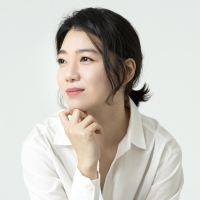
Keyboardist Mia HyeYeon Kim began her piano studies at age seven. She is currently pursuing her DMA in Piano Performance at the University of Washington under Craig Sheppard. She received a Bachelor of Music from Yonsei University in South Korea, a Master of Music from the New England Conservatory in Boston under Victor Rosenbaum, and her Artist Diploma at the Cincinnati Conservatory of Music under Soyeon Kate Lee. A prize-winner at numerous competitions, she recently performed Chopin’s Piano Concerto No. 1 as a winner of the UW Symphony Orchestra’s concerto competition. An active chamber musician, she has performed extensively with both vocalists and instrumentalists and currently performs with the UW Baroque Ensemble as a harpsichordist. Outside of music, Ms. Kim loves coffee, watching movies, climbing and yoga. She recently acquired her vinyasa yoga teacher certificate and is exploring incorporating yoga into her musical endeavors.

Soprano Allison Pohl made her professional debut as Barbarina in Le Nozze di Figaro at Boston Lyric Opera. Her work has drawn positive reviews for her “sparkling voice” (outerstage.com) and “exuberant” performances (Opera News). Of her role in L’elisir d’amore at Virginia Opera, The Washington Post wrote: “Allison Pohl stood out with a ripe, flavorful soprano and ample character." She made her Seattle Symphony debut as soloist in Handel’s Messiah in 2018. Recent engagements include Vashon Opera (Susanna in Le Nozze di Figaro, Echo in Ariadne auf Naxos), SkyOpera (Musetta in La Bohème) and Bremerton Symphony (Dvořák’s Te Deum), as well as soloist in Mozart’s Requiem with both Symphony Tacoma and Harmonia. A 2016 Seattle Opera Career Grant recipient, she performed in the chamber ensemble of their world-premiere O+E, a modern adaptation of Gluck’s Orfeo ed Euridice. Ms. Pohl holds degrees from Boston University and SUNY Purchase Conservatory of Music, and performs as part of the chamber duo Soprello.
Learn more: allisonpohl.com
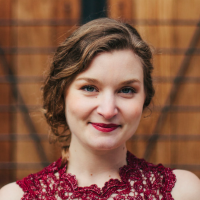
Soprano Danielle Reutter-Harrah is an avid performer of Baroque, Classical and contemporary music known for her “youthful and light timbre” (Classical Voice North America) and “a compassionate calm and a warm, glowing tone” (The Boston Globe). She has appeared with Pacific MusicWorks, Baroque Chamber Orchestra of Colorado, California Bach Society, Early Music Vancouver, Boston Early Music Festival, American Bach Soloists, Stanford Chorale, San Francisco Bach Choir, Black Box Baroque, St. Martin’s Chamber Choir, Amaranth Quartet, Guerrilla Composers Guild, Prodigal Opera Productions and the Alabama Symphony. Ms. Reutter-Harrah is a founding member of the duo Jarring Sounds, which released a self-titled album in 2012, and appears on a 2015 recording of Haydn’s Lord Nelson Mass with the Stanford Chorale and the Lawrence String Quartet. She earned her BM from the University of Denver and her MM from the San Francisco Conservatory of Music.
- Learn more: daniellereutter-harrah.com
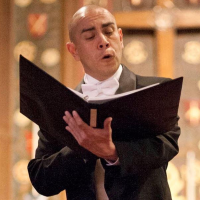
Countertenor José Luis Muñoz has been described as “a fabulous countertenor” with “amazing, powerful expression.” He has premiered principal roles in Juana (San Francisco), Monticello Wakes (Los Angeles), Yoshinaka (Seattle), Kakitsubata (Köln) and Magda G (for which he was featured in the Los Angeles Times). In concert he has sung Mozart’s Requiem and Missa Brevis K. 275, Bach’s Mass in B minor, Orff’s Carmina Burana and Bernstein’s Missa Brevis. He has appeared with Opera Southwest, Musikpunkt Köln, Portland Symphonic Choir, City Opera Ballet, Seattle Early Music Guild, E.O.S. Opera (Germany), Federal Way Symphony, Washburn Symphony (Topeka) and San Francisco Baroque Opera. This season he sings Handel’s Messiah with Symphony Tacoma, Bach’s St. Matthew Passion with Bach Collegium San Diego and Orlofsky in Die Fledermaus at Modesto Opera. Mr. Muñoz is also a soloist at Epiphany Episcopal Church in Seattle and teaches voice, piano and viola.
- Learn more: joseluismunoz.com

Tenor Brendan Tuohy has been praised by The Cincinnati Post for his “big, bold tenor edged with silver,” and continues to move audiences both in the U.S. and overseas. Recent appearances include Handel’s Messiah with the Boise Philharmonic, Nemorino in L’elisir d’amore with Tacoma Opera, David Lang’s The Little Match Girl Passion with Eugene Opera, the role of Rent-a-Cop in the world premiere of Evan Mack’s Yeltsin in Texas, Rachel Portman’s The Little Prince with Opera Theater Oregon, Haydn’s The Seasons and Handel’s Messiah with Harmonia, Britten’s War Requiem at the University of Washington, and Haydn’s Theresienmesse and Beethoven’s Ninth at the Grant Park Music Festival. He has also performed in concert with the Oregon Symphony, Seattle Symphony, Pacific MusicWorks and Symphony Tacoma. Later this month he sings Mozart’s Requiem with the Bellingham Symphony. Mr. Tuohy completed his academic training at the University of Cincinnati College-Conservatory of Music with a master’s degree in vocal performance.
- Learn more: brendan-tuohy.com
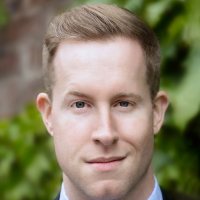
Baritone Darrell J. Jordan has been praised for his “shining, beautiful voice” (Broadway World), “expressive baritone and facial expressions” (The SunBreak), and as “the star of the show” (Columbia Heart Beat). He holds a BA in both Psychology and Music and MM in Voice Performance from the University of Missouri, and a DMA in Voice Performance from the University of Washington. Before matriculating at the UW, he served on the faculty at the University of Missouri, Swinney Conservatory of Music, Columbia College and Stephens College. This season he sings Harlequin in Ariadne auf Naxos with Barn Opera, Montano in Otello with Pacific Northwest Opera, Don Fernando in Fidelio with Puget Sound Concert Opera, and Carmina Burana with Tacoma City Ballet. He can be heard on the CD St. Lawrence Psalter as well as two upcoming albums from the Seattle Art Song Society, and is a member and co-artistic director of the nationally recognized, award-winning vocal chamber ensemble Vox Nova.
- Learn more: darrelljjordan.com
Maestro’s Prelude
Dear Listeners,
Tonight’s concert is about many things, not the least of which is Music itself.
Many people claim not to enjoy “dissonant” music, but here’s the thing: without dissonance, consonance would be meaningless — at least in music from the Western tradition. Dissonance is what gives this music its drive and direction. Our ears have been trained to yearn for resolution to sonic discord, and our brains reward us with little chemical treats when we hear it. This dance of tension and release is what allows composers to create works of emotional drama and narrative dimension.
We begin this program with a new work by Sheila Bristow — Harmonia’s choral accompanist, orchestral keyboardist and a favorite collaborative composer — that celebrates music’s unique power. In When Music Sounds, Sheila has set poems by William Shakespeare, Walter de la Mare and e.e. cummings, poems that take as their subject the reverie, the enchantment and the delirium that we experience when listening to music. Sheila wrote this piece during the lockdown phase of the pandemic when what we longed for most was the very sound of music itself.
Given that music relies on discord to create meaningful concord, it is the perfect medium to project the emotions that arise from the bitter strife that we humans too often find ourselves subject to. This is just what Robert Kechley has done in Hard Times, another work written in the midst of the lockdown. In his piece, Bob (a founding member of our ensemble and a longtime collaborative partner) has depicted the societal conflict that arose on the heels of the pandemic emergency, pitting political factions against one another in a battle over medical science.
The Magnificat text foretells the coming of a savior who would bring eternal peace to a world full of conflict, but Bach knew better than to give us a work made entirely of just-tuned major chords. His Magnificat is a kaleidoscope of textures, moods and colors. The supreme master of dissonance and consonance, he magnifies every phrase in the text and gives us one of the most richly rewarding pieces in the entire repertoire.
In sum, tonight’s program features two contemporary composers reflecting on eternal themes and one 300-year-old composer sounding as fresh as though he were writing today. As always, you, the audience, are the essential partner in the musical dialogue, and I hope you leave our concert challenged, refreshed and restored.
— William White
P.S. Our next program, an all-orchestral outing at the Shorecrest Performing Arts Center, presents yet another world premiere, the fifth symphony of Quinn Mason, alongside works of Sibelius and William Grant Still
Program Notes
Sheila Bristow
When Music Sounds
Bristow was born in August 1969 in Versailles, Kentucky, and currently resides in Tacoma. She composed this music between 2020 and 2022, as the result of a commission from Harmonia, which premiered the second movement on August 1, 2021, under the direction of William White. The complete work receives its first performance this evening. In addition to solo tenor and SATB chorus, the score calls for 2 flutes, oboe, clarinet, bassoon, 2 horns, 2 trumpets, trombone, tuba and strings.
Sheila Bristow is a composer and collaborative keyboardist who currently serves as assistant director of sacred music at Seattle’s Blessed Sacrament Church, and as orchestral keyboardist and choral accompanist for Harmonia. In demand as a freelance coach and accompanist, she received her BFA in music composition from Cornish College of the Arts and MM in organ performance from the University of Washington. Her choral works, which have been performed by many Pacific Northwest choirs, are published by GIA Publications and have been recorded on the Parma label.
Bristow’s childhood violin teacher, Eileen Lusk, was a founding member of the Broadway Chamber Symphony (later renamed the Broadway Symphony, then Orchestra Seattle and now the Harmonia Orchestra), and as a college student Bristow herself played violin in the Broadway Symphony. “I’m delighted to now be back onstage with the group as keyboardist,” she notes, “and am grateful for the opportunity to write for this ensemble!” She began composing the second movement of the work you will hear this evening, When Music Sounds, in 2020. Harmonia premiered it at the group’s first post-lockdown public concert in August of 2021. The other two movements were completed in late 2022 and will be heard for the first time at this concert.
“Compositions in praise of music usually focus on its healing and ennobling properties,” writes Bristow about When Music Sounds. “However, in ancient Greek philosophy, music was seen as having great — and sometimes dangerous — power. It was said to affect listeners’ moods and moral character, to the extent that Plato banned certain modes from his Republic. With this in mind, I chose to set texts that hint at the more disturbing effects of music. They also allude to various characters in Greek mythology: the dangerous sirens from Homer’s Odyssey; the legendary singer and hero, Orpheus; and Dionysus, the god of wine and ecstatic dance.
“The first movement, a ‘Prologue,’ sets a solo monologue from William Shakespeare’s The Tempest. In Act III, Caliban describes ‘sounds and sweet airs’ — the enchanted soundscape of the island on which he is trapped. Like the siren songs that lured sailors to rocky shores, these sounds cause disorientation and longing. Caliban’s imprisonment is represented by a steady drone in the strings, which grounds the aria despite overlapping phrases of dream music.”
Be not afeard. The isle is full of noises,
Sounds, and sweet airs, that give delight, and hurt not.
Sometimes a thousand twangling instruments
Will hum about mine ears, and sometime voices,
That if I then had waked after long sleep
Will make me sleep again; and then in dreaming
The clouds methought would open and show riches
Ready to drop upon me, that when I waked
I cried to dream again.
— William Shakespeare
The central “Pastorale” sets a 1915 poem, “Music,” by the English poet and author (his ghost stories were favorites of H.P. Lovecraft) Walter de la Mare (1873–1956). The movement “opens with a peaceful scene of nature’s response to music — blooming flowers and ecstatic trees. These echo descriptions of Orpheus’ singing, which was said to have moved even the stones. The poem continues with another pastoral subject, naiads (water nymphs), and I’ve included a little dance for them. An interlude with clashing harmonies precedes the more ominous final stanza, which describes music as affecting time itself. Yet the movement concludes bucolically, with suggestions of birdsong.”
When music sounds, gone is the earth I know,
And all her lovely things even lovelier grow;
Her flowers in vision flame, her forest trees
Lift burdened branches, stilled with ecstasies.
When music sounds, out of the water rise
Naiads whose beauty dims my waking eyes,
Rapt in strange dreams burns each enchanted face,
With solemn echoing stirs their dwelling-place.
When music sounds, all that I was I am
Ere to this haunt of brooding dust I came;
And from Time’s woods break into distant song
The swift-winged hours, as I hasten along.
— Walter de la Mare
The final “Dance” movement sets e.e. cummings’ poem “Songs VII,” from his 1925 XLI Poems. This text “is repeated by the chorus as if it were the refrain of a drinking song. Between refrains, the tenor soloist sings slow repetitions of the text, as if entranced by the the bacchanalian vision. Those solo phrases float above another drone, overlaid with fragments of the chorus melody. The movement ends with one last chorus in praise of riotous dancing.”
between green
mountains
sings the flinger
of
fire beyond red rivers
of fair perpetual
feet the
sinuous
riot
the
flashing
bacchant.
partedpetaled
mouth,face
delirious. indivisible
grace
of dancing
— e.e. cummings
Robert Kechley
Hard Times: Antiphonal Conversations
Robert Kechley was born in Seattle on June 1, 1952. He composed this work on commission from Harmonia during 2020. In addition to two solo harpsichords, the work calls for pairs of woodwinds (including piccolo and English horn), horns, trumpets and trombones, tuba, percussion, 4 violins, 2 violas, 2 cellos and 2 basses. The work receives its first performance this evening.
The music of Robert Kechley is familiar to longtime Harmonia audiences through the numerous works by him that have been premiered by the organization over the past five decades. These vary from arrangements of folk songs and hymns, to major symphonic and choral works, including his delightful Symphony No. 2 (“Ferdinand the Bull”), a setting of Psalm 100 for organ, chorus and orchestra (first performed in September 2000 at Benaroya Hall), concertos for flute (2002) and trumpet (2004), Running Passages for 23 solo instruments (2006) and an 11-movement Folk Song Suite for chorus and orchestra (2009) —all under the direction of Harmonia founder George Shangrow. In 2011, his concerto for bassoon, chorus and orchestra received its premiere with soloist Judith Lawrence and conductor Alastair Willis. Other ensembles that have commissioned and performed his music include the Northwest Chamber Orchestra, Seattle Bach Choir and Northwest Boychoir.
Robert Kechley grew up in Seattle and attended the University of Washington, where he studied harpsichord performance with Sylvia Kind and composition with Kenneth Benshoof, Robert Suderberg, William O. Smith and others. A member of the Seattle Chamber Singers from its earliest days, he not only sang in the chorus but played oboe and recorder, and played harpsichord for the group’s annual Messiah performances (as well as countless other works).
Beginning in 1990, George began playing and conducting Messiah from a second harpsichord, and in 1998 the organization commissioned Michael Reiter of Tacoma to build a pair of instruments for use in Messiah and other Baroque repertoire: these figure prominently in Hard Times.
“When asked by Will about composing a new piece,” Kechley writes, “one idea was a concerto for two harpsichords. This evolved into a chamber work that featured two harpsichords but was not a concerto per se. Because of the pandemic and concerns about masking, Will suggested building that issue into the piece. I thought of the title Hard Times because of a T-shirt that was given to me a few years ago. The caption is accompanied by the image of a musical staff with unusual
time signatures such as 7/4 and 11/16 .”
The music of Hard Times “reflects the polarized social dilemma we face today. In particular, the social elements that came together like a perfect storm going into 2020, causing us to grapple with the very nature of truth in the political arena, and how victims of false narratives can find the trust they will need to see the world with clarity. All of this was then exacerbated by the start of the viral pandemic.
“The first movement, Challenging Perspectives, in the context of conflict and unrest, allows disparate factions (antiphonally placed strings, winds and brass) to express their longing to be heard, each with a different mood or style of argument. As the piece evolves, these themes are passed back and forth, whether with sarcastic jeer or thoughtful empathy. The motifs are interrupted, turned upside down, mixed up together — any way an argument can happen.
“In the midst of this, the theme for the coronavirus is introduced in the harpsichords. Now the arguments are even more complex as this theme is put into the mix, just as the virus has muddled the already difficult political and economic landscape. The movement continues to devolve to where the texture is one of hazy confusion with snippets of the themes fighting to be heard. The battle for some kind of unity is brought to a close with a broad chorale of reassurance.
“The second movement, Out of Grief, brings to the forefront an issue that we call all share. We have all felt the effects of the pandemic, and we thus have the opportunity to recognize the pain of those with whom we disagree. The music represents a longing to connect, to heal, to learn and retain the lesson of grief. The opening string theme is still about loneliness and isolation even though there is commune with other string players. After a journey through other moods of grief, at the end of the movement the same theme is played with the acceptance of help from other members of the orchestra.
“The third movement, By Heart, is a fun rondo with memorable tunes. The term ‘by heart’ goes back to ancient Greece, when the prevailing belief was that the heart was the center of intellect. We use the expression today to mean memorizing something so well that it lives in our very bones. It has been said that the heart is capable of intense joy and sadness, opening us to tremendous insight. It is also clear that these insights are easily forgotten once we return to our day-to-day lives. Hence do we seldom learn well enough from history. These tunes (a couple of which I wrote 40 years ago and are still with me) will feel like home every time they recur and remind us to hold in our hearts the insights elicited by our most cherished experiences.”
Johann Sebastian Bach
Magnificat in D major, BWV 243
Bach was born in Eisenach, Germany, on March 21, 1685, and died in Leipzig on July 28, 1750. He composed the original version of his Magnificat for use during church services on Christmas Day 1723, revising the work sometime between 1728 and 1731. In addition to SSATB soloists and SSATB chorus, Bach utilizes 2 flutes, 2 oboes (doubling oboe d’amore), 3 trumpets, timpani, strings and continuo.
In 1723, Johann Sebastian Bach took up a new post in Leipzig, where he would reside for the rest of his life — in spite of the often unpleasant treatment he received from city officials, which caused him to actively seek other employment on more than one occasion. As cantor of St. Thomas’ School and music director for the city’s four churches, his responsibilities included producing roughly 60 cantatas a year for weekly services and feast days. During his first year in Leipzig, Bach composed almost 40 new cantatas and re-worked about 20 others from among his pre-existing compositions. In addition, he planned extra-special music for both Christmas 1723 (a Magnificat) and Good Friday 1724 (the St. John Passion).
In Luke 1, Mary visits her cousin Elizabeth, who is pregnant with John the Baptist. Upon Mary’s greeting, the child inside Elizabeth’s womb leaps, prompting the expectant mother to commend Mary’s faith. Mary’s response (Luke 1:46–55) in praise of the Lord forms the text of the Magnificat, to which the Doxology is appended. Churchgoers during Bach’s time would typically sing this canticle in German (and in plainchant), but high feast days dictated the use of Latin, sung to fully composed music.
The original 1723 version of Bach’s Magnificat, in E♭ major, interpolated four Christmas hymns. A few years later, Bach reworked the piece slightly, excising the interpolations to allow the piece to be used on any feast day, not just at Christmas. His other significant modification involved transposing the work down a half-step to D major, a highly festive key that benefits from the sound of open strings and better suits the brilliant trumpet writing that begins and concludes the work.
In the opening movement, a jubilant orchestral ritornello bookends a concise 45-measure choral setting of Mary’s assertion of her faith (“My soul magnifies the Lord”). There follows an aria for the second soprano, still in D major and in a sprightly 3/8 meter, featuring a central minor-key episode for a 41-note vocal run on the word “salutari.” (Bach often employed symbolism in his music, and in the numerical alphabet equivalency prevalent at the time A = 1 , B = 2 , C = 3 , …, H = 8 , I = J = 9 , …, S = 18 , so that B+A+C+H = 14 while J+S+BACH = 9+18+14 = 41 .)
The rejoicing gives way to a more contemplative aria (in the somber key of B minor) in which the first soprano sings Mary’s words about her “low estate,” engaging in a duet with solo oboe d’amore (pitched a minor third lower than a standard oboe). In the last segment, the vocal line becomes simpler as Mary predicts that future generations will consider her blessed.
Bach takes advantage of the fact that the words “all generations” fall at the end of the Latin phrase, using this moment to bring back all of the voices in the choir, initiating a brief but thrilling fugue with a musical motive that appears exactly 41 times. Bach repeats the first of the two words (“omnes, omnes generationes”) so that, as Kenneth Kilfedder has noted, each new “omnes” overlaps the preceding “‑tiones,” just as the generations overlap throughout time.
A stately bass aria in A major, accompanied by continuo only, leads to an E-minor duet for alto and tenor in 12/8 meter against sighing phrases from flutes and muted strings. The choir and the full force of the three trumpets and timpani return to evoke “strength.” Bach staggers the vocal entrances for the word “dispersit” but the choir aligns to shout a single “superbos,” at which point the tempo suddenly switches gears from an implied allegro to an expansive adagio for seven amazing measures.
Solo tenor engages in a stern aria, marked by descending phrases on the opening word “deposuit” (answered by running sixteenth-note figures from unison violins) as the mighty are deposed from their seats of power. Two flutes provide a pastoral accompaniment for the alto aria that follows; at the very end, Bach sends the flutes “away empty” along with “the rich” by omitting their final cadence, concluding with a single note from the continuo.
Next, the upper three solo voices (parts sung by boys in Bach’s time — the Latin word “puerum” translates literally as “boy”) create a magical texture against which unison oboes intone the melody of the chorale Meine Seel’ erhebt den Herren (a German-language setting of the Magnificat text familiar to Leipzigers of Bach’s time).
The chorus returns for a fugue in an “old-fashioned” style (with only continuo accompaniment) employed by Bach’s musical predecessors, perhaps in response to the mention of “our fathers” dating back to Abraham: unlike “Omnes generationes,” this fugue looks backward rather than forward. The final movement opens grandly, with ascending vocal lines rising toward the heavens in praise of the Holy Trinity. At the words “as it was in the beginning,” Bach reprises 23 measures of material from the opening movement to conclude in a joyful blaze of D major.
— Jeff Eldridge
Magnificat anima mea Dominum.
My soul magnifies the Lord.
Et exultavit spiritus meus in Deo salutari meo.
And my spirit rejoices in God my Savior.
Quia respexit humilitatem ancillae suae.
For he has regarded the low estate of his hand-maiden;
Ecce enim ex hoc beatam me dicent
behold, henceforth shall call me blessed
omnes generationes.
all generations.
Quia fecit mihi magna, qui potens est,
For he that is mighty has done great things for me,
et sanctum nomen eius.
and holy is his name.
Et misericordia a progenie in progenies,
And his mercy is on them from generation to generation
timentibus eum.
who fear him.
Fecit potentiam in bracchio suo,
He has shown strength with his arm,
dispersit superbos mente cordis sui.
[and] scattered the proud in the imagination of their hearts.
Deposuit potentes de sede
He has put down the mighty from their seats [of power]
et exaltavit humiles.
and exalted those of low degree.
Esurientes implevit bonis,
He has filled the hungry with good things,
et divites dimisit inanes.
and the rich he has sent away empty.
Suscepit Israel puerum suum
He has helped his servant Israel,
recordatus misericordie suae.
in remembrance of his mercy.
Sicut locutus est ad patres nostros,
As he has spoken to our fathers,
Abraham et semini eius in saecula.
to Abraham, and his seed forever.
Gloria Patri et Filio
Glory to the Father, glory to the Son,
et Spiritui Sancto.
glory to the Holy Spirit!
Sicut erat in principio
As it was in the beginning,
et nunc et in saecula saeculorum.
is now and and ever shall be, world without end.
Amen.
